As an avid amateur gardener, I’ve been growing vegetables at home for the past decade. Whether at a rented apartment, high-rise condo or a fenced in yard, growing greens at home is quite easy and can be done without buying much. While you can’t conveniently grow lush tomatoes or large potatoes without a yard, there are a few greens that are easy to grow anywhere. One such green is mung bean sprouts.
Bean sprouts are nutritious, and nutritiously complementary to the mung bean. Notably, it has 19 times as much Vitamin C and almost 3 times as much Riboflavin (Vitamin B2) per bean [src , USDA – bean, USDA – sprout]. See detailed nutrition comparison below.
Quick Directions for Growing Mung Bean Sprouts
Materials
- Plastic trays (2)
- Scissors or pen (to poke holes in one tray)
- Paper towels
- Dried mung beans
- Tap water
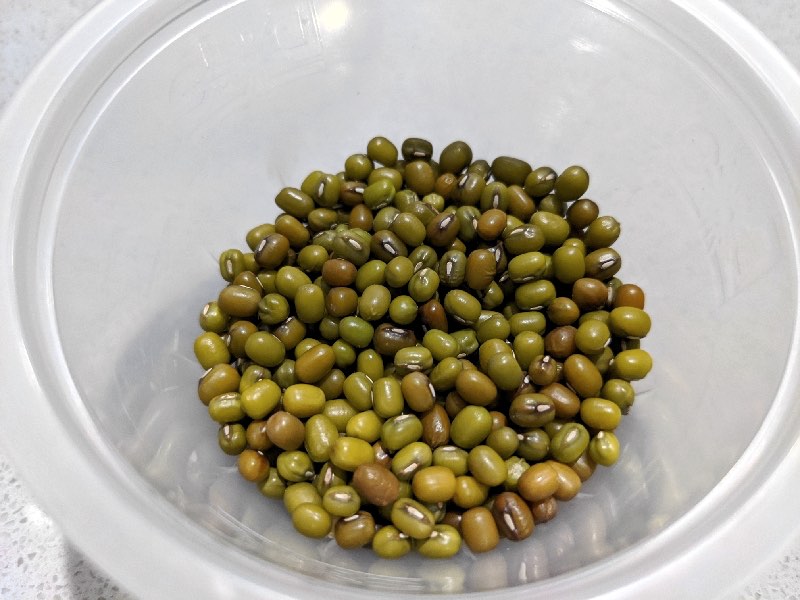
Raw dried mung beans 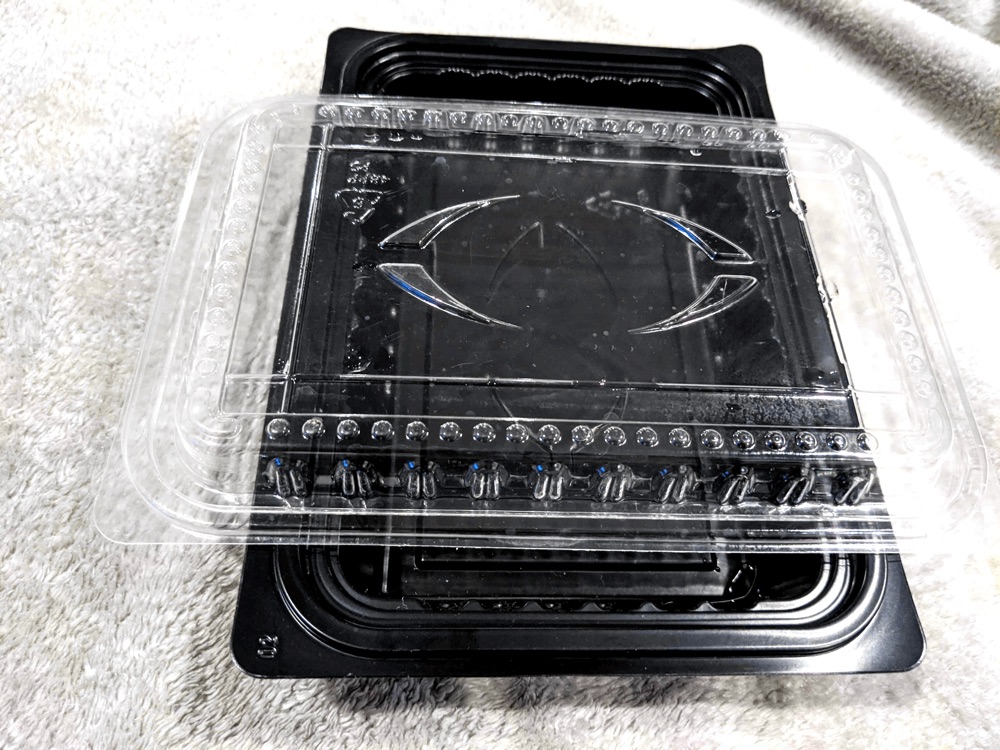
Plastic trays
Steps:
- Clean plastic trays thoroughly, disinfect if possible
- Poke a few small (1/8in – 1/4in) holes in the bottom of one plastic tray (to allow water to drain)
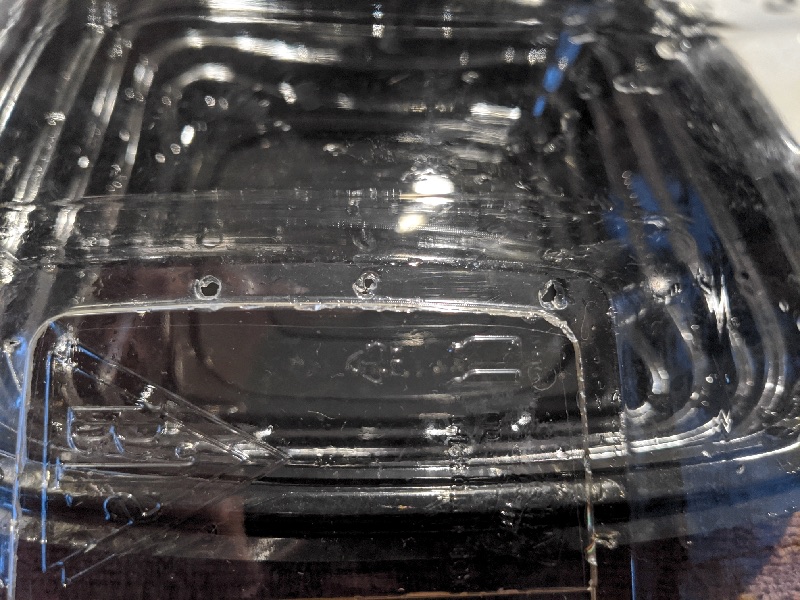
- Place a single loose layer of washed mung beans in the tray without holes
- Add room temperature tap water to plastic tray, completely covering all beans
- Wait 24 hrs for the beans to soak
- Drain mung beans
- Double up the plastic tray without holes as a water catch for the first plastic tray
- Cover the top plastic tray with a paper towel, fold to size if needed
- Lay soaked beans on paper towel, and even out the layer of beans carefully
- Take a second paper towel and cover the beans completely
- Pour half a cup of tap water over paper towel, until water comes out the bottom and paper towels are soaked
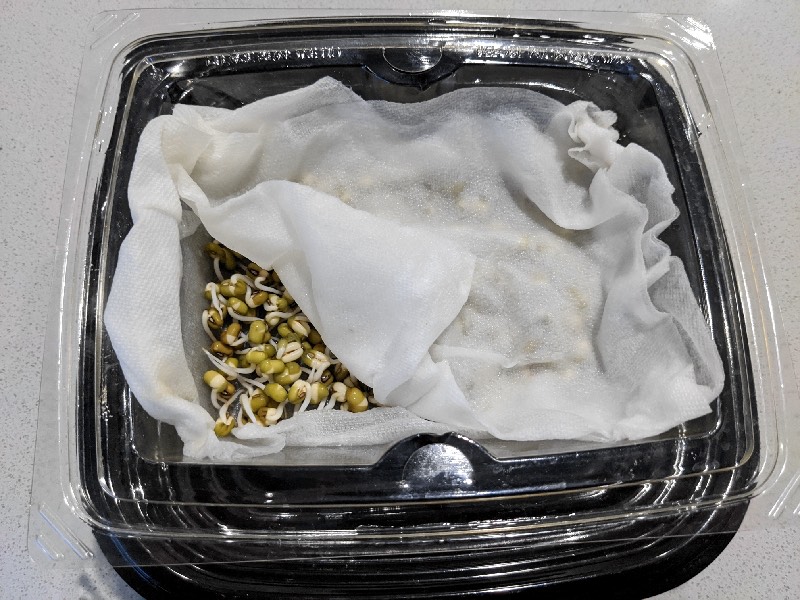
- Place containers in a dark, room temperature area
- At least once every day, pour half a cup of tap water over paper towel, wet thoroughly, dump drained water
- Bean sprouts should be ready to eat by day 5 (about 1in-2in long)
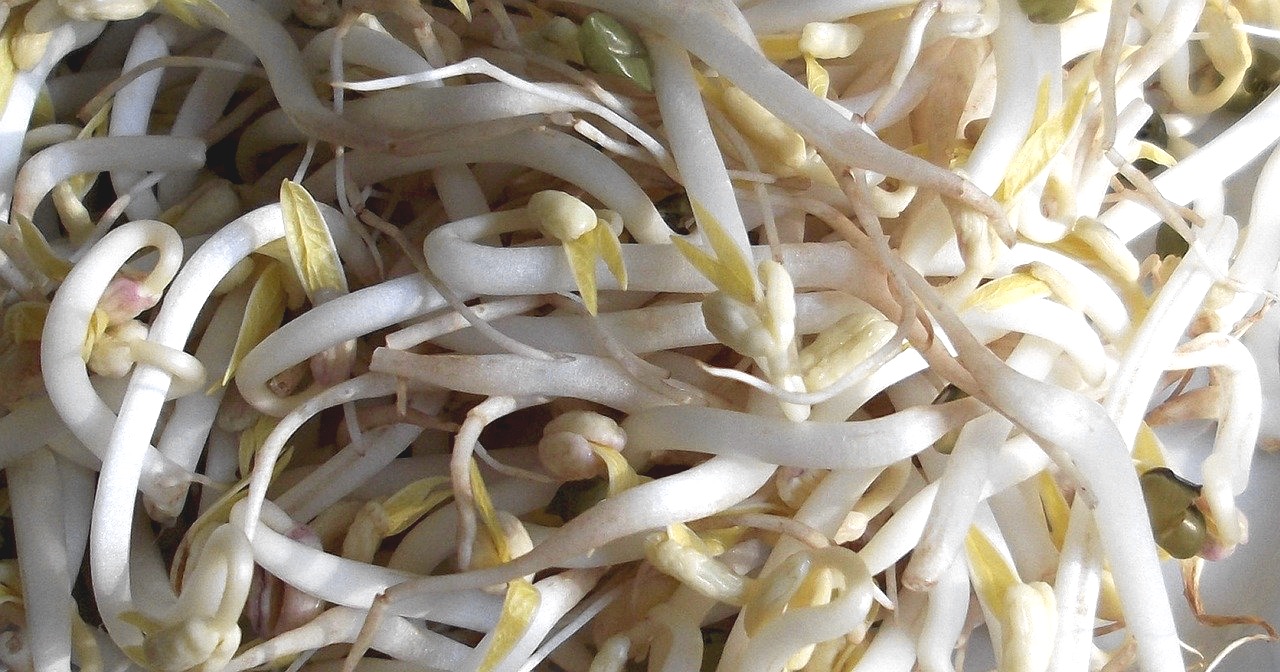
Tips for Growing Mung Bean Sprouts Indoors
Minimize the light
For mung bean sprouts, we want the juicy tap root that grows out of the bean. To ensure that the bean uses all its energy growing the largest root, we want to take away any exposure to natural or artificial light. Exposure to light will grow a thin, hairy root that is tough and difficult to eat.
Keep the containers in a dark, room temperature place!
Tap water is important
Tap water has Chlorine, which is important for keeping mildew and bacteria at bay. Chlorine dissipates into the air in about 24 hours for an exposed water surface. Hence, to ensure your bean sprouts are healthy and pest free, use tap water everyday and dump or drain the water in the second container.
Alternatively, you can also use a low concentration hydrogen peroxide solution with distilled water. The most important factor is the health of your bean sprouts and cleanliness of your growth containers.
Check smells and color
For whatever reason, if it smells sour or musky, if the color is brownish or yellow, throw out the batch of bean sprouts.
Healthy bean sprouts are white, with yellow tips and slightly yellow baby leaves. The roots are light brown and the entire sprout should be stiff and smell slightly herbal.
Upgrade your container
My colander is one of my favorite containers to grow a larger batch of bean sprouts. The bean’s roots grow through the holes on the bottom, which makes it easy to harvest and clean. Just cut off the small brown roots, and the white juicy part comes right out.
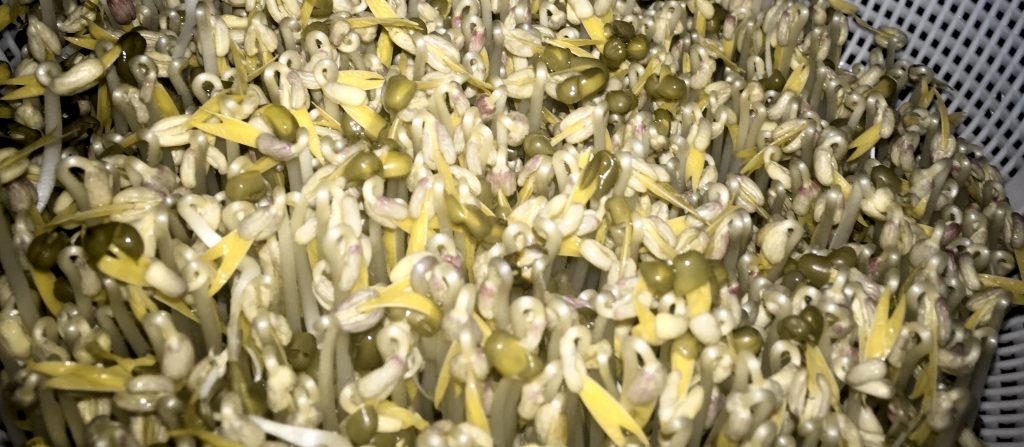
Other grow containers include net pots (used in hydroponics), or really anything easy to sterilize and drains water.
Nutrition Comparison: Mung Beans vs. Mung Bean Sprouts
Bean sprouts are in some ways, nutritiously complementary to the bean itself. Below, we compared the nutritional contents between Mung beans and its bean sprouts (200 beans) below using 2019 USDA data. A live comparison is here.
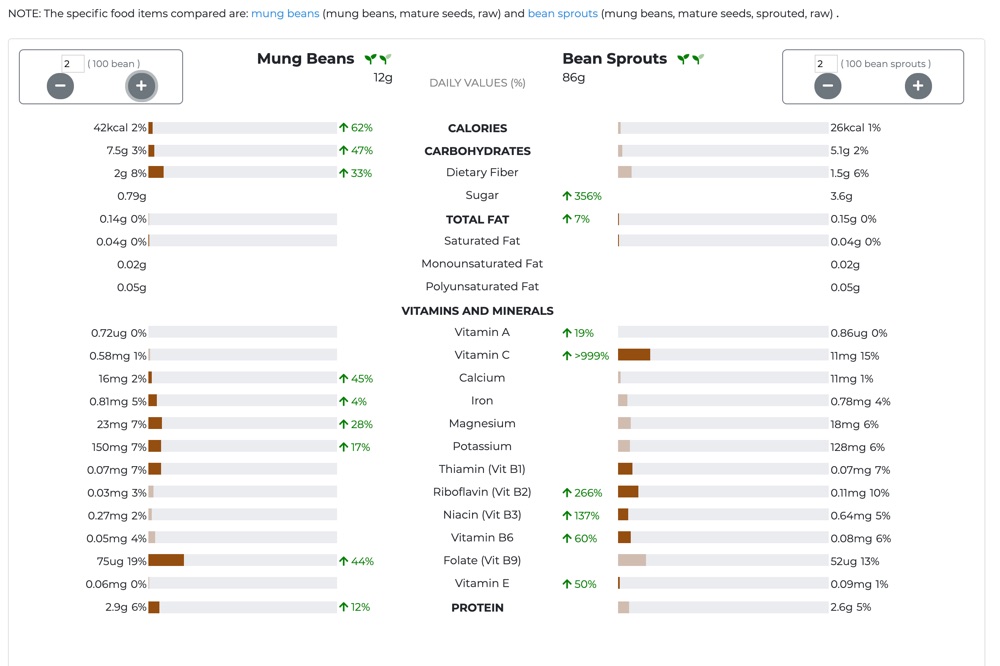
A single dried mung bean averages 0.06-0.08 grams, while a bean sprout is about 0.5 grams. Essentially, sprouting a bean sprout increased its weight 7 fold.
Notably, a bean sprout has 19 times as much Vitamin C and almost 3 times as much Riboflavin (Vitamin B2) per bean.
This makes dried mung beans a great way to store non-perishable, at your will, crunchy and fresh packets of Vitamin C.
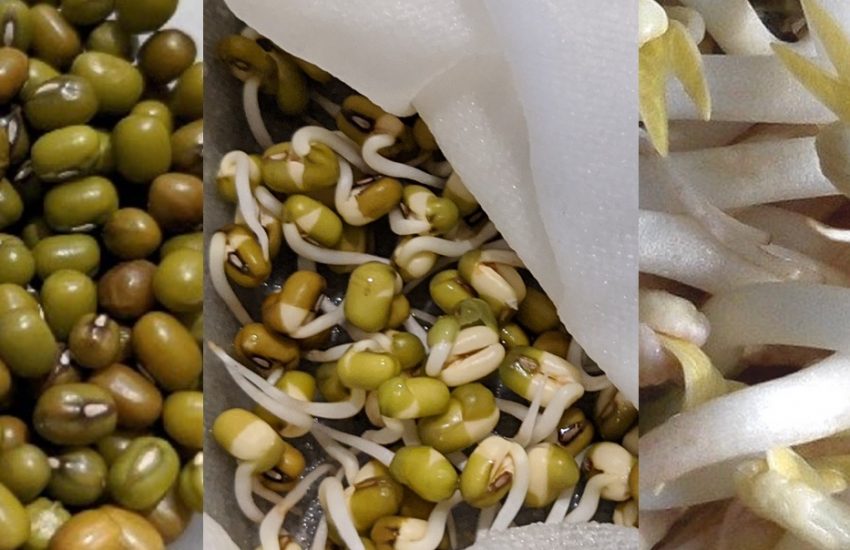
One comment